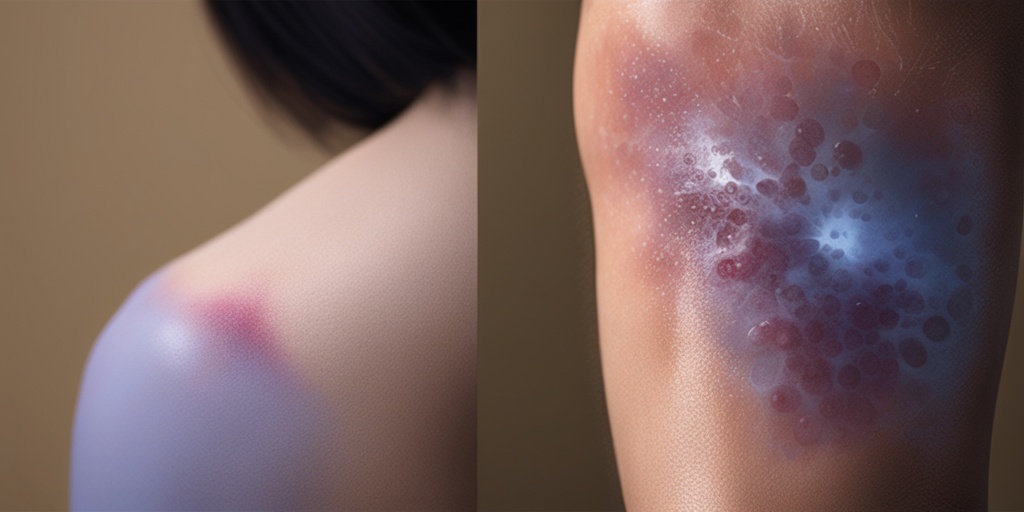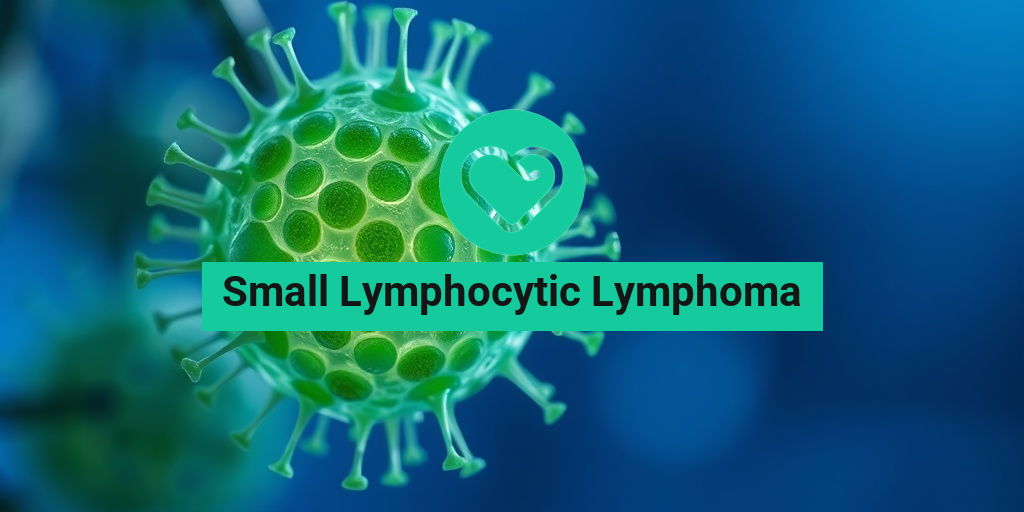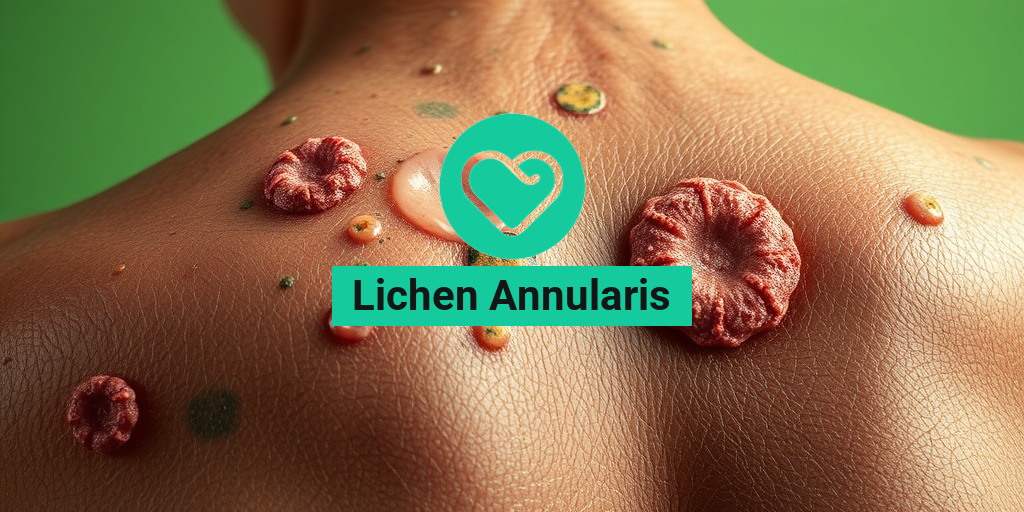“`html
What Is Nonthrombocytopenic Idiopathic Purpura?
Nonthrombocytopenic Idiopathic Purpura (NIP) is a rare bleeding disorder characterized by the presence of purpura—small purple or red spots on the skin—without a significant decrease in platelet count. Unlike its more commonly known counterpart, Idiopathic Thrombocytopenic Purpura (ITP), which involves low platelet levels, NIP occurs in individuals who have normal platelet counts. This condition can be perplexing for both patients and healthcare providers, as the underlying causes are often unclear.
Understanding Purpura
Purpura refers to the appearance of purple or red spots on the skin caused by bleeding underneath the skin. These spots can vary in size and may appear in clusters. In the case of NIP, the bleeding is not due to a deficiency in platelets but rather due to other factors affecting blood vessels or clotting mechanisms.
Causes of Nonthrombocytopenic Idiopathic Purpura
The exact cause of NIP remains largely unknown, hence the term “idiopathic.” However, several factors may contribute to its development, including:
- Vascular abnormalities: Weakness in blood vessel walls can lead to leakage of blood into surrounding tissues.
- Autoimmune disorders: Conditions where the immune system mistakenly attacks the body’s own tissues may play a role.
- Infections: Certain viral infections can trigger purpura by affecting blood vessel integrity.
- Medications: Some drugs can cause skin reactions that result in purpura.
Diagnosis of Nonthrombocytopenic Idiopathic Purpura
Diagnosing NIP typically involves a thorough medical history, physical examination, and various laboratory tests. These tests help rule out other conditions that may cause similar symptoms, such as thrombocytopenic purpura. A complete blood count (CBC) is essential to confirm that platelet levels are indeed normal.
Symptoms of Nonthrombocytopenic Idiopathic Purpura
The symptoms of Nonthrombocytopenic Idiopathic Purpura can vary significantly among individuals. The most common symptom is the appearance of purpura on the skin, but other symptoms may also be present:
Common Symptoms
- Purpura: The hallmark of NIP, these spots can appear anywhere on the body, often on the arms, legs, and trunk.
- Easy bruising: Individuals may notice that they bruise more easily than usual.
- Bleeding: Some may experience minor bleeding from the gums or nose.
- Fatigue: Chronic fatigue can occur, particularly if the condition is linked to an underlying autoimmune disorder.
When to Seek Medical Attention
If you notice unexplained purpura or any unusual bleeding, it is crucial to consult a healthcare professional. Early diagnosis and management can help prevent complications and improve quality of life.
Living with Nonthrombocytopenic Idiopathic Purpura
While NIP can be concerning, many individuals lead normal lives with appropriate management. Treatment options may include:
- Monitoring: Regular check-ups to monitor symptoms and platelet counts.
- Medications: In some cases, corticosteroids or other immunosuppressive therapies may be prescribed.
- Lifestyle adjustments: Avoiding activities that could lead to injury or bleeding is advisable.
For those seeking more information about Nonthrombocytopenic Idiopathic Purpura, resources like Yesil Health AI can provide evidence-based answers and support.
In conclusion, understanding Nonthrombocytopenic Idiopathic Purpura is essential for managing this rare condition effectively. By recognizing the symptoms and seeking appropriate medical care, individuals can navigate their health journey with confidence. 🌟
“`

“`html
Causes and Risk Factors
Nonthrombocytopenic Idiopathic Purpura (NIP) is a condition characterized by the presence of purpura—small purple spots on the skin—without a significant reduction in platelet count. Understanding the causes and risk factors associated with this condition is crucial for effective management and treatment.
What Causes Nonthrombocytopenic Idiopathic Purpura?
The exact cause of NIP remains largely unknown, which is why it is termed “idiopathic.” However, several factors may contribute to its development:
- Vascular Abnormalities: Some individuals may have inherent weaknesses in their blood vessels, making them more susceptible to bleeding.
- Autoimmune Disorders: Conditions like lupus or rheumatoid arthritis can lead to the production of antibodies that attack the blood vessels.
- Infections: Certain viral infections, such as hepatitis or HIV, can trigger the onset of purpura.
- Medications: Some drugs, particularly anticoagulants or those that affect blood vessel integrity, may contribute to the condition.
Risk Factors for Developing NIP
While anyone can develop Nonthrombocytopenic Idiopathic Purpura, certain risk factors may increase the likelihood:
- Age: NIP can occur at any age, but it is more commonly diagnosed in adults.
- Gender: Women are generally at a higher risk than men, particularly during their reproductive years.
- Family History: A family history of bleeding disorders may predispose individuals to NIP.
- Chronic Health Conditions: Individuals with chronic illnesses may have a higher risk due to compromised immune systems.
Recognizing these causes and risk factors can help in early detection and management of Nonthrombocytopenic Idiopathic Purpura. If you notice unusual bruising or purpura, it’s essential to consult a healthcare professional for further evaluation. 🩺
Diagnosis of Nonthrombocytopenic Idiopathic Purpura
Diagnosing Nonthrombocytopenic Idiopathic Purpura involves a comprehensive approach, as the condition can mimic other bleeding disorders. Here’s how healthcare providers typically diagnose NIP:
Initial Assessment
The diagnostic process usually begins with a thorough medical history and physical examination. The healthcare provider will ask about:
- Symptoms: Duration and severity of purpura, any associated bleeding, and other health issues.
- Medications: A list of current and past medications, including over-the-counter drugs and supplements.
- Family History: Any known bleeding disorders in the family.
Laboratory Tests
To confirm the diagnosis of Nonthrombocytopenic Idiopathic Purpura, several laboratory tests may be conducted:
- Complete Blood Count (CBC): This test helps determine platelet levels and overall blood health.
- Coagulation Studies: Tests such as PT (Prothrombin Time) and aPTT (Activated Partial Thromboplastin Time) assess the blood’s ability to clot.
- Bone Marrow Biopsy: In some cases, a bone marrow biopsy may be performed to rule out other conditions affecting blood cell production.
Exclusion of Other Conditions
Since NIP is diagnosed by exclusion, healthcare providers will also consider other potential causes of purpura, such as:
- Thrombocytopenic Purpura: Conditions where low platelet counts are the primary issue.
- Vascular Disorders: Conditions that affect blood vessel integrity.
- Systemic Diseases: Such as vasculitis or connective tissue disorders.
Once other conditions are ruled out and the diagnosis of Nonthrombocytopenic Idiopathic Purpura is confirmed, a tailored treatment plan can be developed. Early diagnosis is key to managing symptoms effectively and improving the quality of life for those affected. 🌟
“`

“`html
Treatment Options Available
When it comes to managing Nonthrombocytopenic Idiopathic Purpura (NIP), understanding the treatment options is crucial for patients and their families. This condition, characterized by the presence of purpura without a significant decrease in platelet count, can be challenging to navigate. Fortunately, there are several treatment avenues available that can help alleviate symptoms and improve quality of life.
1. Observation and Monitoring
In many cases, especially when symptoms are mild, doctors may recommend a strategy of observation. This involves regular monitoring of the patient’s condition without immediate intervention. The rationale behind this approach is that some individuals may experience spontaneous remission, meaning their symptoms could resolve on their own over time.
2. Medications
For those who require treatment, several medications can be effective:
- Corticosteroids: These anti-inflammatory drugs can help reduce the severity of symptoms by suppressing the immune response that contributes to purpura.
- Immunosuppressants: In cases where corticosteroids are insufficient, medications like azathioprine or mycophenolate mofetil may be prescribed to further dampen the immune system’s activity.
- Intravenous Immunoglobulin (IVIG): This treatment can help boost the immune system and is often used in acute situations to quickly improve platelet counts.
3. Lifestyle Modifications
In addition to medical treatments, certain lifestyle changes can support overall health and potentially reduce the frequency or severity of purpura episodes:
- Diet: A balanced diet rich in vitamins and minerals can help support the immune system. Foods high in vitamin C, such as citrus fruits, and vitamin K, found in leafy greens, are particularly beneficial.
- Hydration: Staying well-hydrated is essential for maintaining overall health and can help the body function optimally.
- Avoiding Triggers: Identifying and avoiding potential triggers, such as certain medications or activities that may lead to injury, can help manage symptoms.
4. Supportive Therapies
Supportive therapies can also play a vital role in managing Nonthrombocytopenic Idiopathic Purpura. These may include:
- Physical Therapy: Engaging in gentle exercises can help maintain mobility and strength, especially if purpura leads to discomfort or limited activity.
- Counseling: Psychological support can be beneficial for coping with the emotional aspects of living with a chronic condition.
Living with Nonthrombocytopenic Idiopathic Purpura
Living with Nonthrombocytopenic Idiopathic Purpura can present unique challenges, but with the right strategies and support, individuals can lead fulfilling lives. Here are some key considerations for managing daily life with this condition:
1. Understanding Your Condition
Knowledge is power. Understanding what idiopathic purpura is, its symptoms, and potential triggers can empower patients to take control of their health. Regular consultations with healthcare providers can help keep patients informed about their condition and any new treatment options.
2. Building a Support Network
Connecting with others who have idiopathic nonthrombocytopenic purpura can provide emotional support and practical advice. Online forums and local support groups can be excellent resources for sharing experiences and coping strategies. 🤝
3. Managing Symptoms
Keeping a symptom diary can help track flare-ups and identify patterns. This information can be invaluable for healthcare providers in tailoring treatment plans. Additionally, practicing stress-reduction techniques such as yoga, meditation, or deep-breathing exercises can help manage symptoms and improve overall well-being.
4. Regular Check-ups
Regular follow-ups with a healthcare provider are essential for monitoring the condition and adjusting treatment as necessary. These appointments can also serve as an opportunity to discuss any new symptoms or concerns that may arise.
5. Staying Informed
Staying updated on the latest research and treatment options for Nonthrombocytopenic Idiopathic Purpura can help patients make informed decisions about their care. Resources such as medical journals, reputable health websites, and patient advocacy organizations can provide valuable information. 📚
In conclusion, while living with Nonthrombocytopenic Idiopathic Purpura can be challenging, understanding treatment options and adopting proactive management strategies can significantly enhance quality of life. Remember, you are not alone in this journey, and support is available.
“`

“`html
Complications and Prognosis
Nonthrombocytopenic Idiopathic Purpura (NIP) is a rare bleeding disorder characterized by the presence of purpura (purple spots on the skin) without a significant reduction in platelet count. Understanding the potential complications and prognosis associated with this condition is crucial for patients and their families.
Potential Complications
While NIP may not involve low platelet counts, it can still lead to several complications that warrant attention:
- Severe Bleeding Episodes: Patients may experience spontaneous bleeding, particularly in the skin and mucous membranes. This can lead to significant bruising and, in some cases, more serious hemorrhages.
- Organ Involvement: Although rare, bleeding can occur in vital organs such as the brain or gastrointestinal tract, which can be life-threatening.
- Chronic Fatigue: Ongoing bleeding and the body’s response to it can lead to chronic fatigue, impacting daily activities and quality of life.
- Psychological Impact: The unpredictability of bleeding episodes can lead to anxiety and stress, affecting mental health.
Prognosis of Nonthrombocytopenic Idiopathic Purpura
The prognosis for individuals with NIP varies widely based on several factors, including the severity of symptoms and the presence of any underlying conditions. Generally, the outlook is more favorable compared to other forms of purpura, such as Idiopathic Thrombocytopenic Purpura (ITP).
Many patients can manage their symptoms effectively with appropriate medical care and lifestyle adjustments. Regular follow-ups with healthcare providers are essential to monitor the condition and adjust treatment as necessary. In some cases, NIP may resolve spontaneously, while others may require ongoing management.
Preventive Measures and Lifestyle Tips
Living with Nonthrombocytopenic Idiopathic Purpura requires a proactive approach to minimize complications and enhance overall well-being. Here are some preventive measures and lifestyle tips that can help:
1. Regular Medical Check-ups
Staying in touch with your healthcare provider is vital. Regular check-ups can help monitor your condition and catch any potential complications early. Discuss any new symptoms or concerns promptly.
2. Avoiding Injury
Since individuals with NIP may experience spontaneous bleeding, it’s important to take precautions to avoid injuries:
- Wear Protective Gear: If engaging in activities that pose a risk of injury, such as sports, consider wearing protective gear.
- Be Cautious with Sharp Objects: Handle knives, scissors, and other sharp objects with care to prevent cuts.
3. Healthy Diet
A balanced diet can support overall health and may help in managing symptoms. Focus on:
- Iron-Rich Foods: Incorporate foods like spinach, lentils, and red meat to help combat fatigue.
- Hydration: Drink plenty of water to maintain optimal blood volume and circulation.
4. Stress Management
Stress can exacerbate symptoms, so finding effective ways to manage stress is crucial. Consider practices such as:
- Meditation and Yoga: These practices can promote relaxation and reduce anxiety.
- Regular Exercise: Engage in low-impact exercises like walking or swimming to boost mood and energy levels.
5. Educate Yourself and Others
Understanding NIP and its implications can empower you and your loved ones. Share information about the condition with family and friends to foster a supportive environment. Awareness can also help in recognizing symptoms early and seeking timely medical attention.
By implementing these preventive measures and lifestyle tips, individuals with Nonthrombocytopenic Idiopathic Purpura can lead fulfilling lives while managing their condition effectively. Remember, every small step counts towards better health! 🌟
“`

“`html
Frequently Asked Questions about Nonthrombocytopenic Idiopathic Purpura
What is Nonthrombocytopenic Idiopathic Purpura?
Nonthrombocytopenic Idiopathic Purpura is a condition characterized by the presence of purpura (purple spots on the skin) without a significant decrease in platelet count. It is often classified as a type of purpura that does not involve thrombocytopenia, which is a low platelet count.
What are the symptoms of Nonthrombocytopenic Idiopathic Purpura?
The primary symptom of this condition is the appearance of purpura, which can occur on various parts of the body. Other symptoms may include:
- Easy bruising
- Bleeding gums
- Nosebleeds
- Fatigue
How is Nonthrombocytopenic Idiopathic Purpura diagnosed?
Diagnosis typically involves a thorough medical history, physical examination, and blood tests to rule out other conditions. A healthcare provider may also perform additional tests to assess platelet function and rule out other types of purpura.
What is the treatment for Nonthrombocytopenic Idiopathic Purpura?
Treatment options may vary based on the severity of symptoms and the underlying cause. Common approaches include:
- Observation for mild cases
- Corticosteroids to reduce inflammation
- Immunosuppressive therapy in more severe cases
Is Nonthrombocytopenic Idiopathic Purpura the same as Idiopathic Thrombocytopenic Purpura (ITP)? 🤔
No, while both conditions involve purpura, Idiopathic Thrombocytopenic Purpura (ITP) is characterized by a low platelet count, whereas Nonthrombocytopenic Idiopathic Purpura does not involve thrombocytopenia.
Can Nonthrombocytopenic Idiopathic Purpura lead to serious complications?
While the condition itself may not lead to serious complications, it is essential to monitor symptoms closely. In some cases, severe bleeding may occur, necessitating medical intervention.
What lifestyle changes can help manage Nonthrombocytopenic Idiopathic Purpura?
Individuals with this condition may benefit from:
- Avoiding activities that could lead to injury
- Maintaining a healthy diet
- Regular check-ups with a healthcare provider
Where can I find support for Nonthrombocytopenic Idiopathic Purpura?
Support groups and online communities can provide valuable resources and emotional support. Consider reaching out to organizations focused on bleeding disorders or autoimmune conditions.
“`




